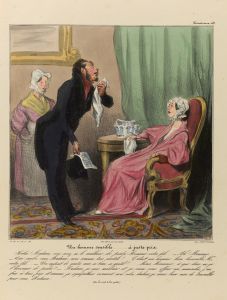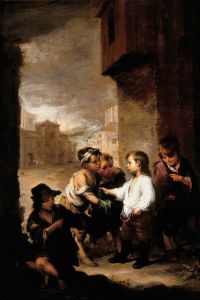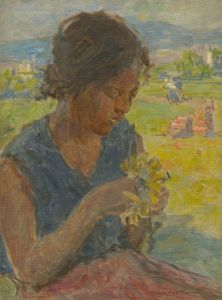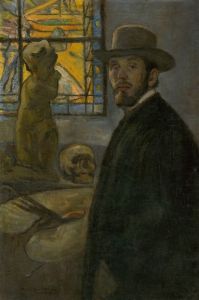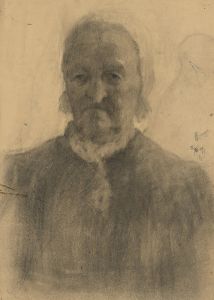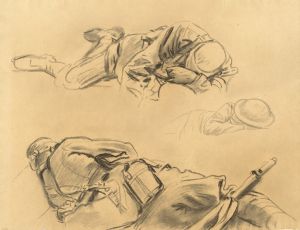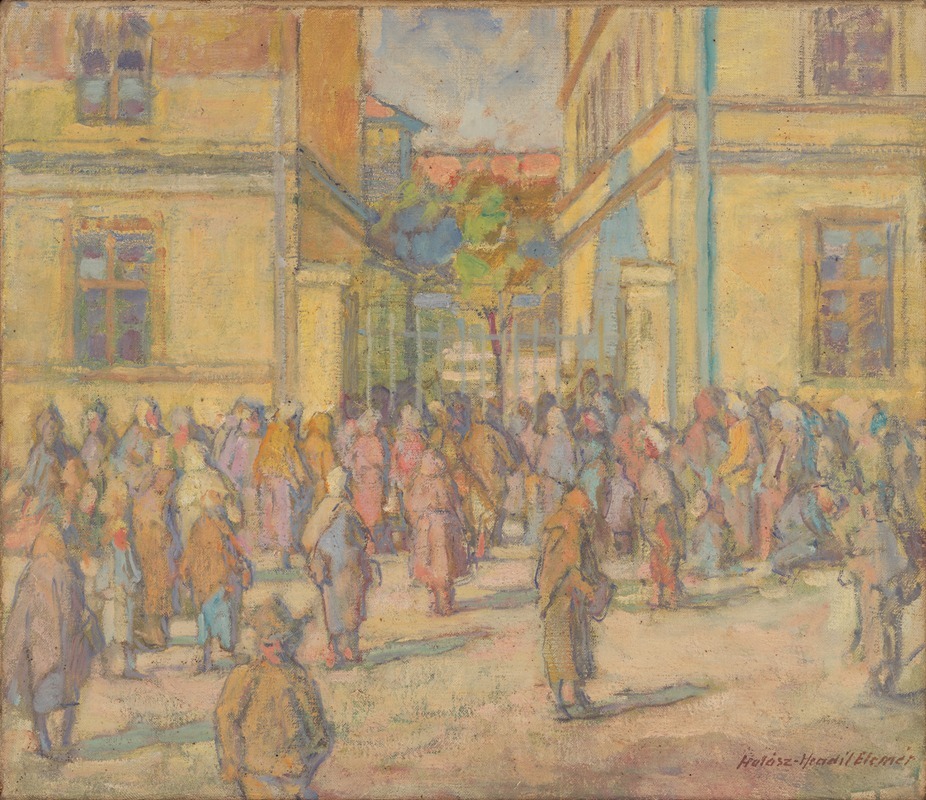
Lunch of the Poor
A hand-painted replica of Elemír Halász-Hradil’s masterpiece Lunch of the Poor, meticulously crafted by professional artists to capture the true essence of the original. Each piece is created with museum-quality canvas and rare mineral pigments, carefully painted by experienced artists with delicate brushstrokes and rich, layered colors to perfectly recreate the texture of the original artwork. Unlike machine-printed reproductions, this hand-painted version brings the painting to life, infused with the artist’s emotions and skill in every stroke. Whether for personal collection or home decoration, it instantly elevates the artistic atmosphere of any space.
Elemír Halász-Hradil was a Slovak painter born on December 18, 1873, in Spišská Nová Ves, then part of the Austro-Hungarian Empire. He is known for his contributions to Slovak art, particularly in the early 20th century. Halász-Hradil studied at the Academy of Fine Arts in Budapest and later continued his studies in Munich and Paris, where he was influenced by various European art movements.
One of his notable works is "Lunch of the Poor" (Slovak: "Obed chudobných"), which is a poignant depiction of poverty and social issues. The painting captures a moment in the lives of impoverished individuals, highlighting the harsh realities faced by the lower classes during that period. The artwork is characterized by its realistic portrayal and empathetic approach to the subject matter.
"Lunch of the Poor" reflects Halász-Hradil's keen observation skills and his ability to convey the emotional depth of his subjects. The composition typically features a group of people gathered around a modest meal, their expressions and body language conveying a sense of struggle and resilience. The use of light and shadow in the painting enhances the somber mood, drawing attention to the stark contrast between the subjects' difficult circumstances and their dignified presence.
Halász-Hradil's work often focused on social themes, and "Lunch of the Poor" is a prime example of his commitment to depicting the lives of ordinary people. His paintings are noted for their attention to detail and the humanistic approach he took in representing his subjects. This particular piece is significant not only for its artistic merit but also for its social commentary, providing insight into the conditions of the poor during the early 20th century in Central Europe.
Throughout his career, Elemír Halász-Hradil participated in numerous exhibitions and received recognition for his contributions to art. His works are part of various collections, including those in Slovakia and Hungary. "Lunch of the Poor" remains an important piece in understanding the socio-economic context of the time and the role of art in highlighting social issues.
In summary, "Lunch of the Poor" by Elemír Halász-Hradil is a significant work that exemplifies the artist's dedication to portraying social realities with empathy and realism. The painting serves as a historical document, offering a glimpse into the lives of the impoverished and the broader social conditions of the early 20th century. Halász-Hradil's legacy continues to be appreciated for its artistic and historical value, making "Lunch of the Poor" an enduring piece in the canon of Slovak art.






